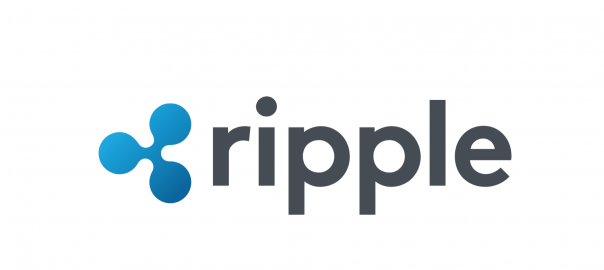Last week, we explored the revolutionary mechanics of the blockchain in the fourth installment of our series on cryptocurrencies. This week, we’ll take on the top 10 cryptocurrencies of 2018.
The surge of Bitcoin has led to a major boon for all kinds of cryptocurrencies. The discovery of blockchain technology has given rise to a plethora of cryptocurrencies outside of Bitcoin, each with their own strengths, weaknesses, and variations. With constant volatility dictating the markets, it will be difficult to know what cryptocurrencies will play out in the long run; however, websites like WorldCoinIndex.com can help one keep in the loop on market trends.
Monitoring the highest valued cryptocurrencies is a great way of keeping tabs on what cryptos are on the rise and fall. Here are the top ten cryptocurrencies of 2018, including the top three your business should consider accepting.
WHAT CRYPTOCURRENCIES SHOULD MY BUSINESS CONSIDER ACCEPTING?
Approximate Market Cap on January 17th: $165.10B
There is no better place to begin the conversation about cryptocurrencies than at the beginning with the original: Bitcoin. Bitcoin saw a momentous rise in 2017 of over 1,500 percent. Since it is the most popular cryptocurrency on the market, there’s no question businesses might want to follow Subway’s lead in starting their cryptocurrency endeavor by accepting Bitcoin.
Check out this fairly comprehensive list of major merchants that accept bitcoin.
Approximate Market Cap on January 17th: $24.97B
Bitcoin Cash is a major cryptocurrency to watch out for. Bitcoin Cash was designed by its founder Roger Ver, the CEO of bitcoin.com.
While Roger Ver was an early investor in Bitcoin and has made hundreds of millions of dollars, he has insisted that Bitcoin is not a safe bet considering it has been plagued lately with rising transaction costs. Instead, he recommends Bitcoin Cash, which is designed to be a much more mobile cryptocurrency.
Bitcoin Cash was recently embroiled in controversy. When Coinbase began trading it on their platform, its value spiked up and Coinbase was almost immediately accused of insider trading. Regardless, if Bitcoin Cash can uphold its promise to be a fluid, mobile cryptocurrency with low transaction fees, it’s here to stay and it’s one businesses should consider accepting.
Learn about what merchants currently accept Bitcoin Cash via acceptbitcoin.cash.
Approximate Market Cap on January 17th: $8.44B
Litecoin is a fully decentralized peer-to-peer Internet currency that enables instant global payments. Litecoin was created by Charles Lee, a former Google engineer who now works at CoinBase.
Litecoin is designed to be the silver to Bitcoin’s gold. It is the third oldest cryptocurrency in existence. It has a total of 84 million coins, quadruple the 21 million Bitcoin currently on the market. It also was designed for smaller items with quicker transaction times. As Lee told Fortune: “Bitcoin can be used for like moving millions of dollars between banks, buying houses, buying cars. It’s really secure… Litecoin can be used for cheaper things.”
Litecoin is intended to be used for smaller purchases than Bitcoin, making it a great option for businesses looking to accept cryptocurrencies.
OTHER TOP CRYPTOCURRENCIES:
Approximate Market Cap on January 17th: $80.37B
Ethereum is a decentralized platform designed to run smart contracts and applications exactly as programmed without the possibility of downtime, censorship, fraud, or third-party interference. Ethereum is one of the top three cryptocurrencies in the world. Created by Swiss developer Vitalik Buterin, Ethereum sets itself apart as a platform that can be used to program applications and smart contracts.
Approximate Market Cap on January 17th: $38.59B
Ripple is a real time global payment network. Created by Ryan Fugger, Jed McCaleb, and Chris Larsen, it is designed as a compliment to Bitcoin to facilitate transactions quickly among any form of currency. Ripple grew by 37,400% in 2017, giving it one of the three highest approximate market caps of all cryptocurrencies.
Approximate Market Cap on January 17th: $3.30B
Tron began 2017 with an approximate market capitalization at $2.8 billion and finished 2018 with over $18.7 billion. Tron is not only the sixth most valuable cryptocurrency, it serves a specific purpose: Tron is a blockchain-based decentralized protocol that aims to construct a worldwide free content entertainment system. Tron makes it possible for content creators to freely publish, store, and own data in a decentralized, autonomous form. Tron eventually hopes to cut out centralized platforms like Google Play and Apple’s App Store.
Tron was created by Justin Sun, creator of Peiwo—a live voice streaming platform considered China’s equivalent to Snapchat. Tron has attracted some detrimental attention, including from bitcoin.com which claimed Tron is “Vaporware”.
Approximate Market Cap on January 17th: $860.41M
Like Tron, Verge has been labeled “Vaporware”. Verge is designed with privacy in mind, their website states that: “Verge uses multiple anonymity-centric networks such as Tor and I2P. The IP addresses of the users are obfuscated and the transactions are completely untraceable.” Despite Verge’s claims of prioritizing privacy, a website recently appeared revealing the IP addresses associated with hundreds of Verge transactions. Despite being embroiled in controversy, Verge has managed to maintain its value and is currently one of the top 10 cryptocurrencies on the market.
Approximate Market Cap on January 17th: $2.27B
The history of Ethereum and Ethereum Classic dates back to the early days of cryptocurrency to the $50 million DAO Hack of June 2016. DAO was a smart contract running on Ethereum and when a hacker managed to swindle $50 million from it, the Ethereum community held a vote and elected to change Ethereum’s code so they could return the money to its rightful owners.
One of the main principles of the blockchain is immutability, so the detractors who disagreed with the decision to change Ethereum’s code took action and created Ethereum Classic, which is a copy of the old version of the Ethereum blockchain featuring a few minor improvements in response to the hack. Ethereum Classic has the support of some big crypto players, but the majority of the Ethereum team stuck with Ethereum.
Approximate Market Cap on January 17th: $2.99B
QTUM is designed to mix the best of Ethereum and Bitcoin. It enhances the Bitcoin Core protocol, while allowing for businesses to execute smart contracts, like Ethereum. Created by Patrick Dai and based out of Singapore, QTUM has the ability to execute smart contracts in lite wallets via mobile applications, giving it the potential to bring blockchain-based applications to mobile devices.
While QTUM is currently seeking out their first major partner, its potential has many investors very optimistic.
Approximate Market Cap on January 17th: $8.27B
EOS is considered a direct competitor to Ethereum. In fact, the founders of EOS and Ethereum have feuded on Twitter. Created by Hong-Kong-based entrepreneur Brendan Blumer and programmer Dan Larimer, EOS is a platform that executes smart contracts using an operating system-like construction upon which applications can be built.
The main difference between EOS and Ethereum is in their design philosophy. While Ethereum has neutrality in mind and does not offer common high-level use cases as intrinsic parts of the protocol, reducing bloat among applications but also reducing efficiency for app developers. EOS on the other hand recognizes that many different applications require the same functionality and seeks to provide these functions. Although it would be difficult to dethrone Ethereum, EOS has practical value for app developers that make it a cryptocurrency to watch.
CONCLUSION
While blockchain technology is here to stay, many alt-coins can fade away fast. If you are investing in cryptocurrency, research will pay off in the long run. Understanding the differences between each currency will help investors figure out where best to place their bets.
This is the final entry of our five part series on Cryptocurrency. Thank you for reading! Check out our previous articles below if you need to catch up.
Part 1: Should My Business Consider Accepting Cryptocurrencies? An Overview
Part 2: How Adopting Cryptocurrencies Could Benefit Your Business
Part 3: Secure Your Cryptocurrency with the Right Wallet
Part 4: How the Revolutionary Mechanics of Blockchain Could Serve Your Business











